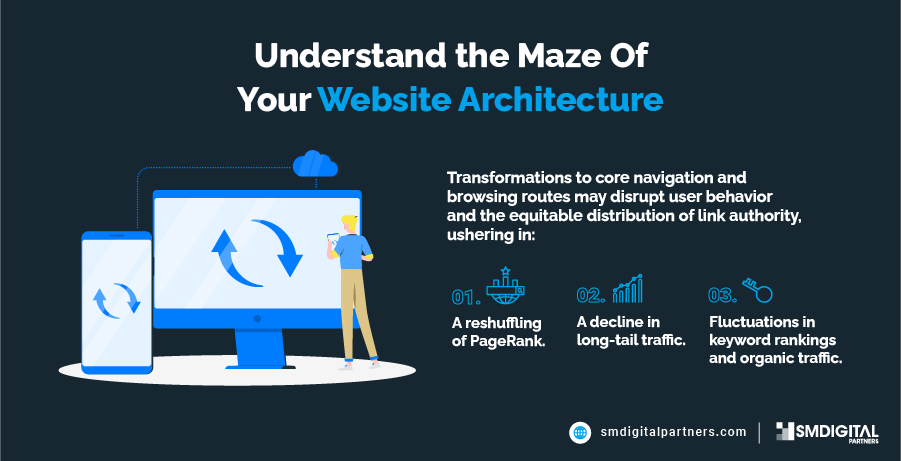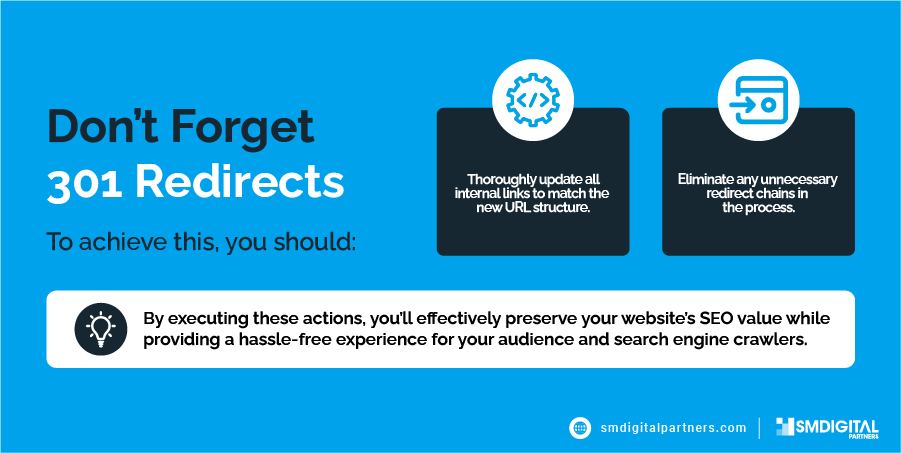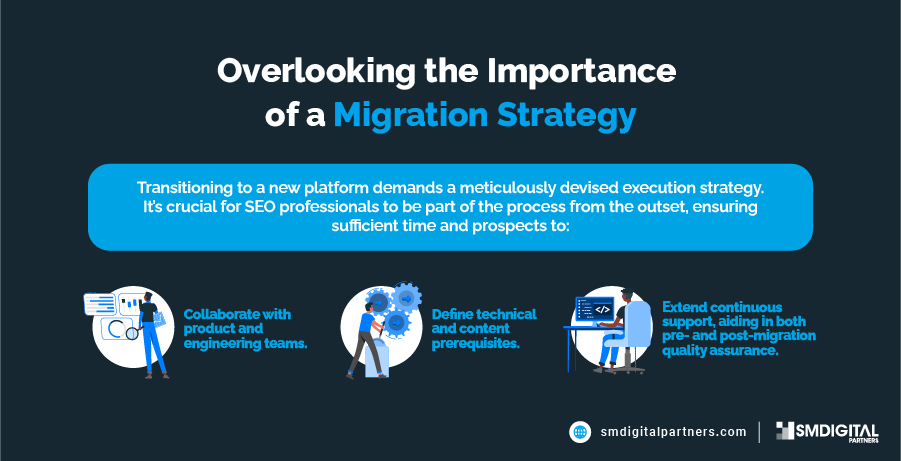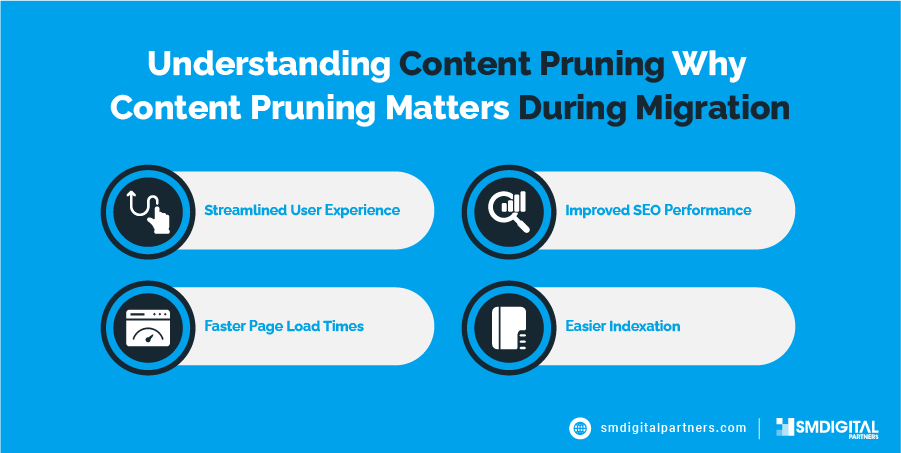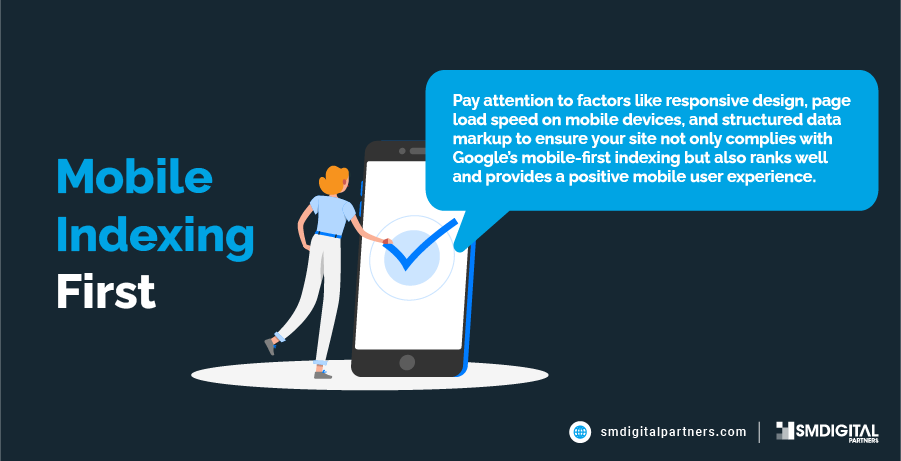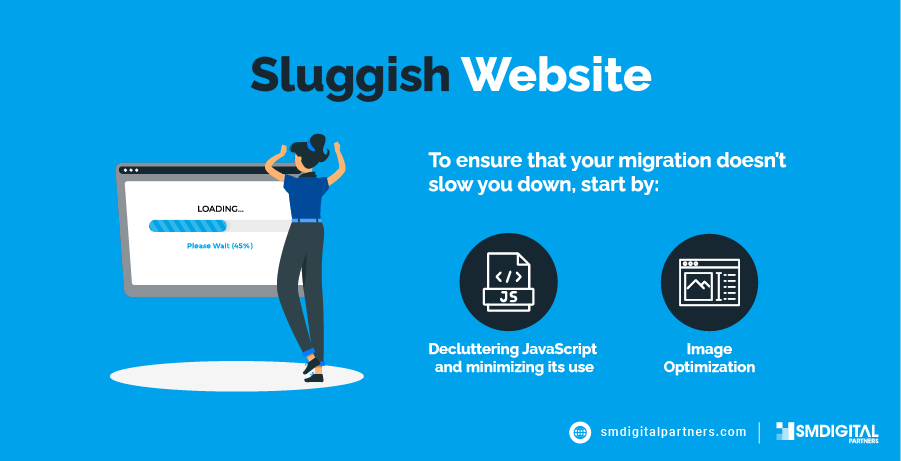In the digital world, websites often face a choice: to migrate or not. Whether driven by a desire for a fresh look, enhanced functionality, or better performance, website migrations can offer a world of opportunities. Yet, beneath the allure of transformation lies a perilous journey fraught with potential pitfalls, especially when it comes to preserving the delicate equilibrium of Search Engine Optimization (SEO). In this article, we delve into the treacherous terrain of website migrations, uncovering the missteps that can send SEO rankings plummeting and the strategies needed to steer clear of disaster.
Understand the Maze Of Your Website Architecture
During a migration, the canvas is blank, presenting a golden opportunity for a fresh start. It’s an ideal moment to reassess the overarching SEO landscape and unearth potential enhancements in foundational elements such as information architecture, taxonomy, and navigation.
A streamlined and user-friendly information architecture trumps an outdated or intricate one any day. Yet, any navigational structure that effectively channels organic traffic is an invaluable asset. However, any alterations should be implemented gradually and vigilantly, with vigilant monitoring throughout.
A sudden overhaul can send shockwaves through the system. Transformations to core navigation and browsing routes may disrupt user behavior and the equitable distribution of link authority, ushering in:
- A reshuffling of PageRank.
- A decline in long-tail traffic.
- Fluctuations in keyword rankings and organic traffic.
The stakes are notably high for large, well-established websites that enjoy a substantial slice of the organic market share within their niches.
As an illustrative example, some years ago, a classifieds website opted to streamline and simplify its category tree during a platform migration, not realizing that this structure was a primary driver of organic traffic. The outcome was sobering: they suffered a staggering 40% loss in SEO market share, a setback from which they are still working to recover.
Don’t Forget 301 Redirects
Forget what you may but never omit 301 redirects. These redirects serve as the digital signposts guiding both users and search engines to the new location of your web pages. Without them, you risk losing valuable organic traffic and damaging your hard-earned search engine rankings. Essentially, 301 redirects ensure a seamless transition for your audience, preserving the equity your old pages had accrued in terms of SEO. They tell search engines that the page has moved permanently, transferring its authority and ranking signals to the new URL. In essence, 301 redirects are the guardians of your online presence during a website migration, helping you maintain visibility, user experience, and SEO performance.
Dedicate time and resources to meticulously plan your 301 redirection strategy. This is a critical step in safeguarding your link equity and ensuring a seamless transition for both users and search engines. To achieve this, you should:
- Thoroughly update all internal links to match the new URL structure.
- Eliminate any unnecessary redirect chains in the process.
By executing these actions, you’ll effectively preserve your website’s SEO value while providing a hassle-free experience for your audience and search engine crawlers.
Overlooking the Importance of a Migration Strategy
Similar to embarking on any significant endeavor, transitioning to a new platform demands a meticulously devised execution strategy. It’s crucial for SEO professionals to be part of the process from the outset, ensuring sufficient time and prospects to:
- Collaborate with product and engineering teams.
- Define technical and content prerequisites.
- Extend continuous support, aiding in both pre- and post-migration quality assurance.
A comprehensive migration plan should encompass a meticulous checklist that covers vital aspects of technical SEO, content management, page speed enhancements, performance optimization, analytics benchmarking, and more.
Understanding Content Pruning
Content pruning is not merely about decluttering your website; it’s a strategic process that can significantly impact your website’s SEO during and after migration.
Content pruning, in essence, is the process of strategically removing or consolidating web pages and content on your site. It might involve deleting outdated or irrelevant pages, merging similar pages, or restructuring content to enhance user navigation and search engine visibility.
Why Content Pruning Matters During Migration
- Streamlined User Experience
- Improved SEO Performance
- Faster Page Load Times
- Easier Indexation
Conducting regular content inventory reviews is advisable. This practice helps prevent the accumulation of abandoned and neglected pages that are no longer supported or actively maintained.
Mobile Indexing First
With Google’s predominant focus on mobile-first indexing, the importance of ensuring your website is not just mobile-friendly, but also optimized for mobile search results, cannot be overstated.
As you plan your website migration, prioritize mobile optimization to safeguard your organic search rankings. Google’s mobile-first indexing means that it predominantly uses the mobile version of your site for ranking and indexing. Therefore, any missteps in ensuring a seamless transition for mobile users can lead to a significant drop in your search engine visibility. To avoid this, it’s crucial to thoroughly test the mobile version of your new site before and after migration to ensure it offers an excellent user experience and maintains the integrity of your SEO efforts. Pay attention to factors like responsive design, page load speed on mobile devices, and structured data markup to ensure your site not only complies with Google’s mobile-first indexing but also ranks well and provides a positive mobile user experience. In the era of mobile supremacy, optimizing for mobile indexing is no longer an option; it’s a necessity for maintaining your website’s organic search performance.
Sluggish Website
As search engines become more discerning about user experience, a sluggish website can be detrimental to your search rankings. To ensure that your migration doesn’t slow you down, start by decluttering JavaScript and minimizing its use. Bloated JavaScript files can bog down page loading times, frustrating users and pushing your website down the search engine results. A thorough review and optimization of your JavaScript code during migration can significantly boost your site’s loading speed, contributing to a seamless transition that doesn’t disrupt your SEO efforts.
Another pivotal element to address is image optimization. Images are often the heaviest elements on a webpage, and their improper handling can lead to extended loading times. During migration, it’s essential to review and compress images appropriately, striking a balance between visual quality and file size. Leveraging modern image formats, employing lazy loading techniques, and optimizing image alt tags can all contribute to faster loading times. Remember that Google places a premium on user experience, and a lightning-fast website will not only appease users but also earn you favor in the eyes of search engines, potentially boosting your organic search rankings during and after the migration process. In the competitive digital landscape, speed matters, and incorporating these optimizations into your migration strategy can make all the difference in maintaining SEO performance and user satisfaction.

